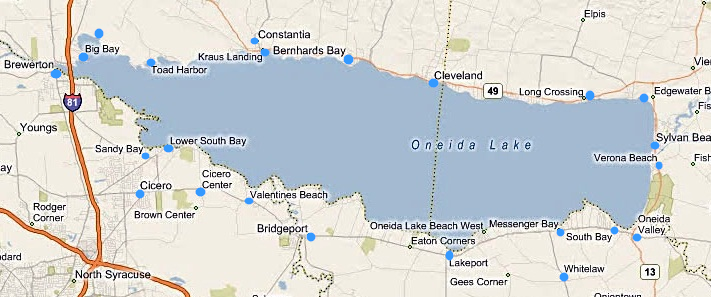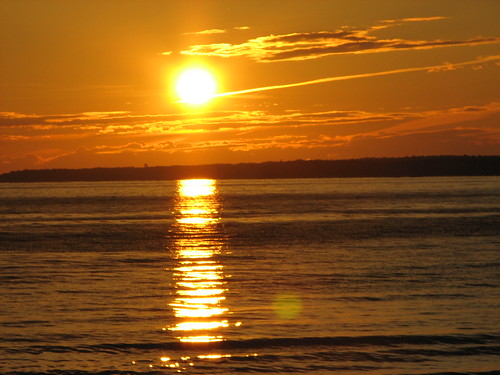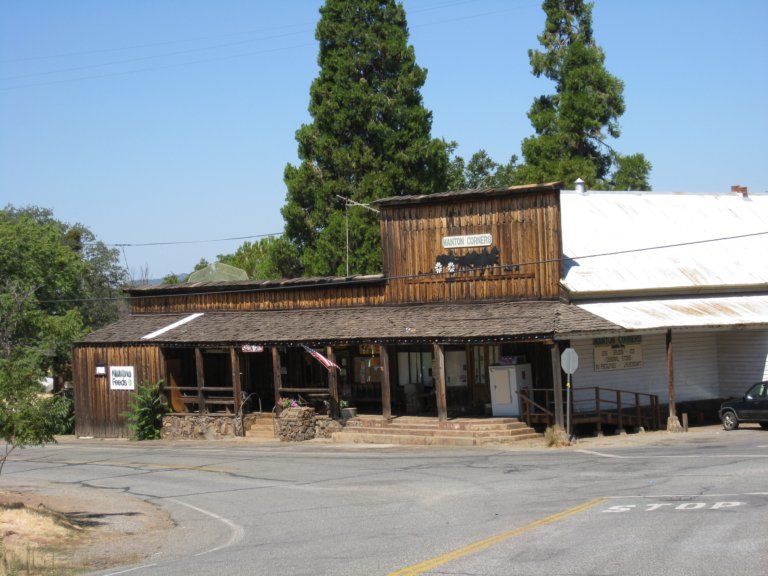Blue Highways: Lakewood, New Jersey
Unfolding the Map
Travel, people! Go to places that you've never been and even never thought of going! That's the overwhelming message of this post. As William Least Heat-Moon (LHM) eats in a diner and waitress tells him not to go someplace, don't listen. I'm telling you to go wherever you want and don't let anyone persuade you not to go. You'll thank me later.
Book Quote
"When I paid the waitress, she filled with motherly counsel. 'Look, you're a nice boy. Go to the shore. Go to Atlantic City. But for godsakes don't go to no middle. The Pineys breed like flies in there. Live like animals.'
"I'd heard those words across the country. It was almost an axiom that anyone who lived off a main highway was an animal that bred like a fly...."
Blue Highways: Part 9, Chapter 8
 I couldn't find a real exciting picture except for these storefronts in Lakewood, New Jersey. Photo by Kevin Knipe and hosted at City Data. Click on photo to go to host page.
I couldn't find a real exciting picture except for these storefronts in Lakewood, New Jersey. Photo by Kevin Knipe and hosted at City Data. Click on photo to go to host page.
Lakewood, New Jersey
When I was a little kid, I guess I was typical. Whenever my mother or father told me I couldn't do something, it just made we want to do it more. "No, Michael, you can't jump off the roof." "No Michael, I won't let you walk down to the ocean by yourself." "No, Michael, you are too young to go hunting with your dad."
Each time I heard "No" or was told "You can't..." I immediately didn't hear the rest. I didn't hear the reason why I couldn't do something, which usually (though not always) made perfect, reasonable sense. I blocked it out as my affronted brain feverishly tried to work out a way that I could do it, and would do it.
Luckily, I grew up. Luckily, my frontal lobes finally developed, giving me (usually) a healthy sense of caution. While I am not always risk averse, and like a good adventure, I'm not foolhardy either.
But when faced with a situation, especially when I'm traveling, where I'm discouraged to go somewhere or try something new, I still get like that young, past self of mine: I start trying to figure out a way that I can do it.
I've heard it a lot in my life. "Why would you want to go there?" Or, even better: "Don't go there, it's (place appropriate adjective here) and not worth your time."
I usually don't take heed. There have been very few places that I've gone that I haven't found something, or some reason, to have made it worth my while to go.
Like LHM's waitress, most people measure the worth of a place by comparing it to what they know. If it matches somewhat, with maybe a few differences, they are happy. It is this mentality that leads people to always choose Applebees just off the interstate regardless of what culinary delights might be just five minutes drive into downtown. We know what we like, and we stay with it. As I write this post, I am eagerly awaiting a global music festival in Albuquerque, Globalquerque, which starts tonight and is one of the best things about this city. It brings the world to our little corner of the desert. Yet most people in Albuquerque don't know about it, and many of those wouldn't go because they aren't willing to open themselves up to something new. Their rationale is, quite possibly, "I won't like it, and so I won't try it." That's not me.
If I had that mentality, I would have never gone to Bangladesh. I wouldn't have had the thrill of being scared half to death by a crash and a pair of gleaming eyes in a tree as I went from a hut to the outhouse very early one morning, only to realize that it was a giant fruit bat. I would have never experienced the countryside, in the space of two weeks, fill up with water as the monsoon unleashed its fury.
I would have never gone to El Salvador and experienced the kindness of most of the people and also the fear that pervades the capital as dangerous drug gangs roam the streets.
I would have never gone to Northern Ireland as an observer during the parading season, where Protestant Irish groups parade with huge drums, desperately holding on to a tradition based on subjugating Catholic Irish groups because it's the only tradition they have. I would have never seen the might of the British police and military apparatus, supposedly protecting the Nationalist communities from encroachment by more radical Protestant marchers but whose intentions were not trusted by anyone.
I would have never gone to Milwaukee to do volunteer service, lived in the inner-city, lived in Texas (you can't imagine how many "why would you want to move there?" questions I got then), lived in New Orleans, or visited half of the places that I've gone to.
Yet each place I've been, even if others think I'm nuts for going, has given me something precious. Bangladesh was my first true immersion into a developing country, and the curiosity and generosity of its people, as well as the sheer mass of people, gave me an appreciation for where I live and where I am from as well as an overwhelming admiration for those who somehow, some way eke out a living in very, very difficult circumstances. El Salvador gave me a respect for a people who, politically, were starting to come out from under the heel of decades of paternalistic and autocratic governments as well as many memories of trying to learn how to communicate with people with less than adequate Spanish. Northern Ireland, even in the midst of hopeless division, showed me that even the hardest cases can have deep cracks that will one day open and that where hope seems small, it might only be the tip of the iceberg. It too had fundamentally good people who were trying to find a way out of a decades-long nightmare. Had jobs not called, I might have made Milwaukee my home base. I came to love Texas. I still see New Orleans as a spiritual home.
I'm not trying to elevate myself over everyone else in this post. I don't think of myself as superior simply because I'm open to trying new things or going places that others say I shouldn't or would never think of going themselves. However, I believe that those who isolate themselves into certain routines, that play it safe, that always stay with what they know probably have a narrower world view than others. There is a cartoon that I found that, while a bit over the top, captures this spirit. It shows an obvious racist Klansman-type with home decorations consisting of various fascist symbols. Someone hands him a ticket for an around the world trip. It shows him meeting new people of all ethnicities and doing new things in various countries. Finally, when he comes back, his extremist decor is replaced by mementos from his trip, and he is placing a picture of himself with some African kids in the center of his bookcase. I believe that challenging oneself to do things, even a small thing like trying a new restaurant or tasting a new type of food, expands our horizons. I believe that travel, especially going to places that in some ways challenge us, opens our minds and helps us appreciate not only the places we go and people we meet, but also ourselves and where we live. It gives us perspective.
I always take inspiration from my grandmother, who was a self-described "backwoods bunny." Yet well into her fifties and sixties she made two trips of a lifetime to Europe to visit family that she had found in Austria. She hated to fly, but she did. Her photos and stories of Austria inspired me to travel there too. I waited until I was in my thirties, but I did, and once I did there was no stopping me. I'm a better person for it. As my wife told an audience she was speaking to recently, "I like who I am when I travel." I'll go her one further. I especially like who I am when I travel to places I never thought I'd go.
Musical Interlude
I had a song for this, but I couldn't find it. Oh well. Terri Hendrix singing "Take me places I've never been before" will do.
If you want to know more about Lakewood
Township of Lakewood
Wikipedia: Lakewood
Next up: Lakehurst Naval Air Station, New Jersey




 Saturday, September 22, 2012 at 10:22AM
Saturday, September 22, 2012 at 10:22AM


